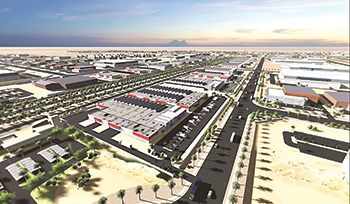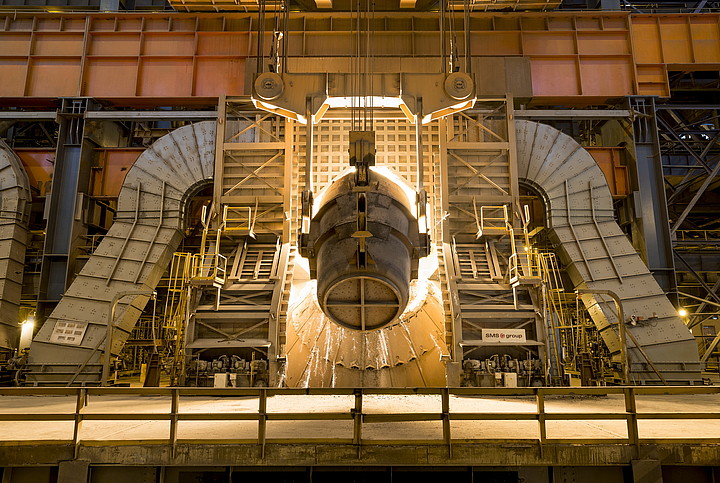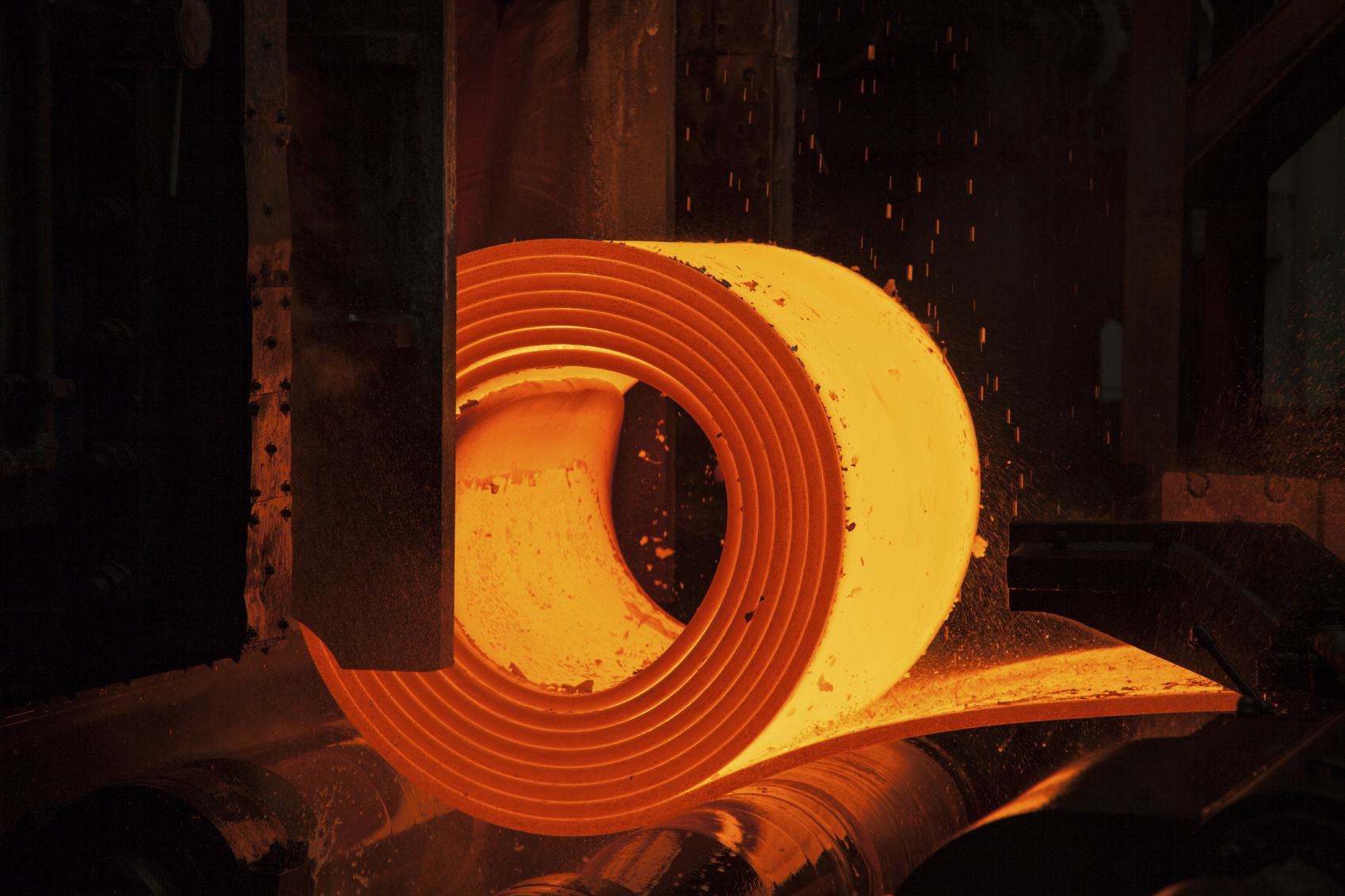MEPS forecasts global crude steel production at 1.82 billion tonnes, in 2019. This equates to an increase of 0.8 percent, compared with the figure recorded in the previous year. A slowdown in steel demand growth is expected, as economic conditions soften, worldwide. A number of factors are adversely affecting steel consumption, including political uncertainty, rising trade tensions and moderating business confidence.
MEPS predicts that growth in global steel production and demand will slow in the long term, compared with the rapid expansion witnessed since the turn of the millennium. The steel industry is entering a mature phase of development. The sector faces many structural challenges, such as steel plants running at below optimal levels of capacity utilisation and government subsidies for inefficient steel mills. Nevertheless, cause for optimism about the future of the steel industry is apparent. The global population will continue to rise and demand for housing, infrastructure, machinery and consumer goods will persist. Furthermore, with its high degree of recyclability, steel will play a key role in the “circular economy”, which aims to minimise waste and make the most efficient use of resources.
China
China overtook Japan as the world’s largest crude steel producing country, in 1996. At that time, Chinese steel output was just 13 percent of the world total. The country’s share of global production had increased gradually through the 1980s and 1990s, but then it surged in the 2000s. Rapid capacity expansion was undertaken to feed growing domestic requirements for steel. By 2010, Chinese output accounted for 45 percent of the world total. China’s crude steel production had climbed fivefold, from 127 million tonnes in 2000 to 639 million tonnes in 2010. Growth in China’s capacity, production and consumption slowed, in the 2010s, compared with the previous decade but, nonetheless, remained substantial.
In the past few years, the Chinese government has put an increasing emphasis on addressing the problems of excess steelmaking capacity and high pollution levels. In the first half of 2017, hundreds of induction furnaces, with a combined annual production potential of approximately 120 million tonnes, were closed. Subsequently, the national authorities are now able to capture a more accurate figure for the country’s total steel output, for inclusion in the official statistics. MEPS had previously highlighted irregular finished steel output tonnages from the reported crude steel production figures. A number of electric arc furnaces were installed to replace the obsolete induction furnaces. In the long term, increased domestic scrap availability and environmental concerns should increase the attractiveness of the EAF steelmaking route. Nonetheless, the BOF route is likely to remain the main source of steel supply as a result of recent investments in blast furnaces.
India
India surpassed Japan as the world’s second largest steel producing nation, in 2018. The government has set a target of raising annual steelmaking capacity to 300 million tonnes, with an eighty-five percent plant utilisation rate, by the 2030/2031 fiscal year. Current levels of growth in steel demand and supply make this aim difficult to achieve. Amongst the many obstacles are the availability of infrastructure, land and raw materials, along with the substantial capital expenditure required by the, already indebted, domestic steelmakers. Nonetheless, MEPS expects the increases in Indian steel production and consumption to be the highest in the world, over the long term.
Japan
Between 2000 and 2017, Japan was the world’s second largest steel producing country. It was surpassed by India in 2018. In the period from 2019 to 2023, crude steel output is forecast to be recorded in a range between 103 and 105 million tonnes. Structural factors are expected to keep steel consumption substantially below the levels witnessed in the 2000s. The country will remain a key global steel exporter. External sales are likely to continue to account for more than 40 percent of production.
USA
The United States was the third largest steel producing nation, between 2000 and 2014, with the exception of 2009 amidst the Great Recession. Fiscal stimulus and Section 232 import measures have provided a boost to US steel demand and production, in the past couple of years. However, the long-term outlook is relatively pessimistic. Economic activity is forecast to slow. A rising risk of recession, over the forecast period to 2023, is apparent.
South Korea
South Korea became an established top ten steel producing country in the late 1980s. The country’s crude steel capacity increased by around 70 percent between 2000 and 2013. Output is forecast at around 72 million tonnes per year, over the forecast period. Despite the expectation of minimal output growth, in the coming years, plant utilisation is likely to remain at a relatively high level.
Russia
Following the breakup of the USSR, Russia became the world’s fourth largest steel producing nation for much of the 1990s and 2000s. Since 2010, the country has been vying with South Korea for the fifth spot. Crude steel production is predicted to average 71.6 million tonnes over the period forecast – a similar outturn to that recorded in 2018.
Germany
Germany was the fifth largest steel producing nation for much of the 1980s and 1990s. Since 2005, it has been the seventh largest. MEPS predicts that Germany will maintain that position in the coming years. Production is forecast to remain at around 42 million tonnes per annum – the country’s long-term historical average. Capacity utilisation is expected to be maintained at a relatively high level.
Turkey
Turkish crude steelmaking capacity and production increased by a factor of 2.5 since 2000. More than two-thirds of the expansion was attributed to the electric arc furnace steel manufacturing route. Economic and political difficulties adversely affected steel output and demand in 2018 and 2019. A moderate revival is anticipated over the forecast period.
Brazil
Since 1983, Brazil has been amongst the world’s ten largest steel producing countries. A recession in 2015 and 2016 had a substantial negative impact on steel output and demand. A modest recovery is anticipated over the forecast period. Growth in gross domestic product is predicted to average more than 2 percent in the 2019-2023 period.
Iran
Iran is likely to feature in the world’s top ten steelmaking nations, for the first time, in 2019. The authorities target steelmaking capacity of 55 million tonnes per year by 2025. The country benefits from substantial reserves of natural gas and iron ore. However, MEPS predicts that the long-term goal will not be achievable, due to the substantial levels of finance and infrastructure required. Nonetheless, considerable growth in steel output is envisaged. New electric arc furnace steelmaking and direct reduced ironmaking capacity is being brought on-stream.
Vietnam
Vietnam should establish itself inside the world’s top fifteen largest steelmaking nations, in 2019. It is forecast to be the third main contributing country, after India and Iran, to global crude steel production growth, in the period to 2023. A substantial amount of new steelmaking capacity is scheduled for installation. MEPS’ predictions account for the possibility that not all the plans will come to fruition, due to financing issues and import competition.
Source: MEPS World Steel Outlook (Q2-2019)




